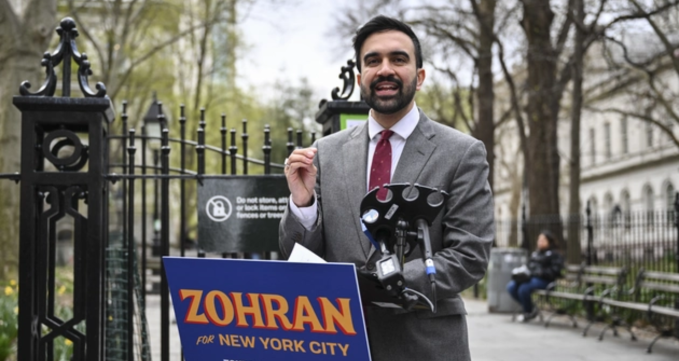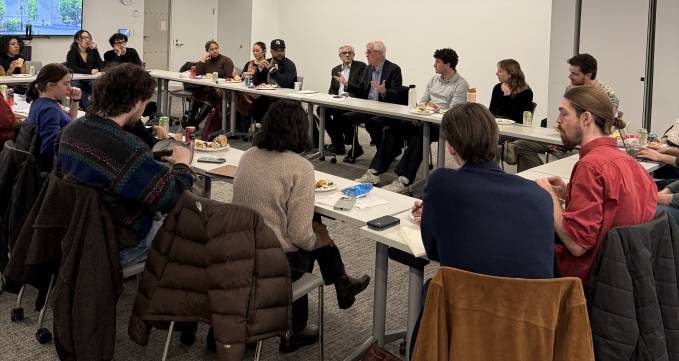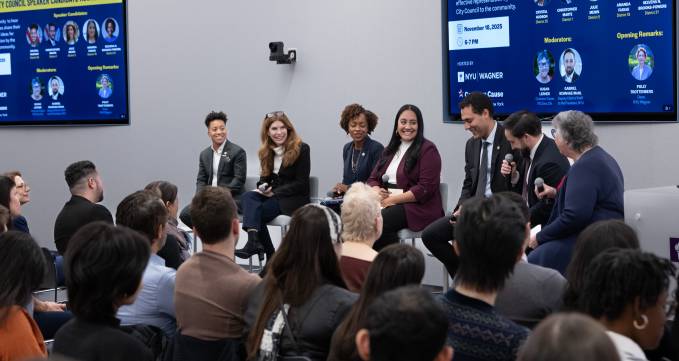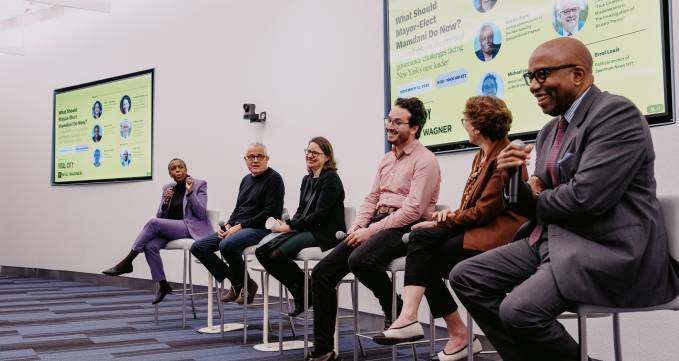New York City Council Speaker Candidate Roundtable
©Sorel: Courtesy of NYU Photo Bureau
What Should Mayor-Elect Mamdani Do Now? Panel with Vital City
After a mayoral election discussed around the world, many are wondering what’s next for New York City and for Mayor-Elect Zohran Mamdani. On Wednesday, November 12, NYU Wagner and Vital City partnered to present a panel of experts to delve into what may lie ahead as Mamdani prepares to take office.
In a packed room in Wagner’s Main Event Space, Errol Louis, political anchor on Spectrum News NY1 moderated the discussion between panelists:





